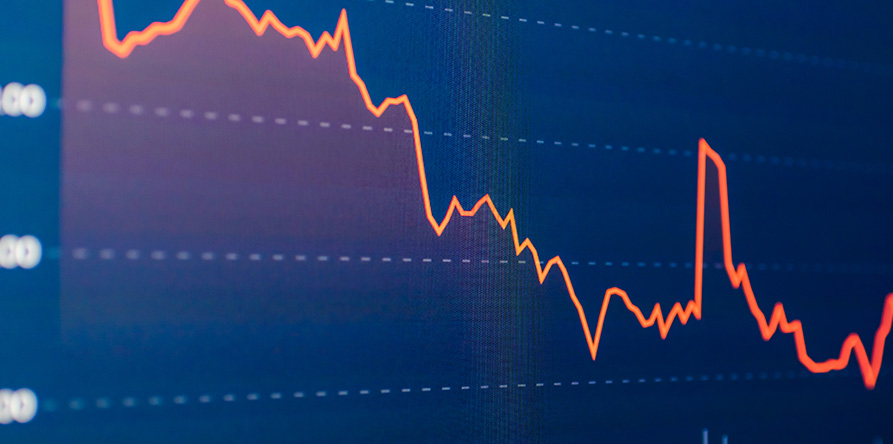
4 investing moves to make instead of panicking about volatile markets
When stocks are plunging, the best advice is often to do nothing. You’re not supposed to panic or make rash changes to your investing strategy. But doing nothing while your portfolio tanks can be hard.
Fortunately, if you’re the type who must do something when markets get extra volatile, there are a few sensible and safe steps to consider that could help your finances (and your stress levels).
Financial advisors tend to say that when your portfolio is scarily in the red, the best approach is to stay the course. That’s not so easy to do.
“If you feel like you have to do something, do something that’s not extreme,” says Dan Egan, vice president of behavioral finance and investing at online investment advice company Betterment.
Here are four actions that may actually be good for you to take when the market is volatile.
Ensure you have an emergency fund
Investors who panic during market downturns are often those who haven’t set aside money for the short term, Egan says. Financial advisors say you should have enough money to cover at least three to six months’ worth of expenses that you can access at any time in case of an emergency, like losing your job. (Of course, the exact amount you should have saved depends on your specific situation.)
“Having a fully-funded safety net allows you to take on more risk and be less concerned about it than if you’re living on the edge,” Egan says.
Being prepared financially for a worst-case scenario can allow you to invest for your future. For example, a retiree with enough cash to cover the next one to two years would be more comfortable taking on higher risk in the market and let their money keep growing, Egan says.
If you don’t have an emergency fund, now is a good time to start saving.
Rebalance your investments
Rebalancing is a way to ensure that your portfolio’s asset allocation still aligns with your risk tolerance and time horizon. A selloff is a great time to check in.
Financial advisors recommend having a well-diversified portfolio, meaning that you have a healthy mix of financial assets, like stocks, bonds and cash. Within those categories, you also want to own different types of assets. For example, your stock portfolio shouldn’t consist only of shares of large U.S. companies like Amazon and Apple. It’s good to also have small- and mid-cap stocks as well as international stocks, and you can get a wide basket of those via funds.
Rebalancing can help you get back to that diversified portfolio if it’s gone off course due to changes in the markets. Not all financial assets perform well at the same time, says wealth advisor Sean Williams. For example, when COVID-19 hit the U.S. in March of 2020 and stocks plummeted, Treasury bonds held their ground. Ideally, when one part of your portfolio suffers, other areas help you weather the storm.
Williams uses soccer as an analogy with clients: When kids first learn how to play soccer, they’re all kicking each other in the shins because they’re piling up in one area of the field — that’s what undisciplined investing looks like. But professional soccer players are spread out across the field with different roles, so that both their offense and defense are more balanced and effective.
Rebalancing refers to when investors sell investments that have grown in value and replenish investments that have fallen in value to get their portfolio back to holding its target weights. In other words, you sell high and buy low. That way, the portfolio can be as diversified and balanced as it was when originally conceived.
Consider tax-loss harvesting
There may be a bright side if the stocks you own are plunging: It’s potentially an opportunity to lower your annual tax bill via tax-loss harvesting.
When you sell an asset (including cryptocurrency) and make money, that profit is taxed by the CRA. But if you sell an investment when its value is lower than the price you paid, you can use that loss to offset gains and decrease your tax bill. You can also use the leftover losses to offset up to $3,000 of your ordinary taxable income if your losses are bigger than your gains. And if your loss exceeds that limit, you can carry the loss forward to future years.
There are some rules to keep in mind when it comes to tax-loss harvesting. A short-term loss (loss on an investment you held for a year or less) must first be deducted against short-term gains, and long-term losses (losses on an investment you held for more than a year) count against long-term gains. Focusing on short-term losses is likely going to provide the biggest benefit, according to Fidelity, since short-term gains are taxed at a higher rate.
You also can’t sell a losing investment and immediately buy it back while still registering the loss for tax purposes. Under the wash-sale rule, the CRA doesn’t allow investors who sell a losing investment to repurchase it, or one that is “substantially identical,” and count the loss for tax purposes for a period of 30 days.
Investors should consider tax-loss harvesting only when the tax benefit is worthwhile and outweighs some potential risks, says Brian Schmehil, senior director of Wealth Management at The Mather Group. For example, if you sell a security to realize the loss and then sit on the cash for 30 days before buying the same security back, you run the risk of the price rebounding and missing out on the gains. Investors who sell an investment for tax purposes may want to buy another somewhat similar one so that the move does not dramatically change your overall allocation, Schmehil says. The line between buying a “somewhat similar” investment and a “substantially identical” investment — which the CRA doesn’t allow — is not always clear. But if you sold a large-cap value exchange-traded fund (ETF) and bought a general S&P 500 index, for example, that would likely be fine, Schmehil adds.
Start dollar-cost averaging
While it may be tempting to try to buy the dip when stocks plunge, experts say setting up an investing strategy that will work for you in the long term is a much more reliable way to build wealth in the market.
Investors should consider investing modest amounts of money at regular intervals, says Marguerita Cheng, a certified financial planner at Blue Ocean Global Wealth. This technique is called dollar-cost averaging.
“The most important thing is time in the market, not timing the market,” Cheng says.
You’ve probably heard it’s unwise to try to time the market’s ups and downs. No one really knows where stocks are heading on any given day, and it’s risky to keep your money on the sidelines while waiting for the moment you think the market will bottom out.
By dollar-cost averaging, you remove the temptation to even attempt to get the timing right and assure that your money is invested on the market’s very best days.
“It takes emotions out of it,” Cheng adds.
This article was written by Mallika Mitra from Money and was legally licensed through the Industry Dive Content Marketplace. Please direct all licensing questions to legal@industrydive.com.


